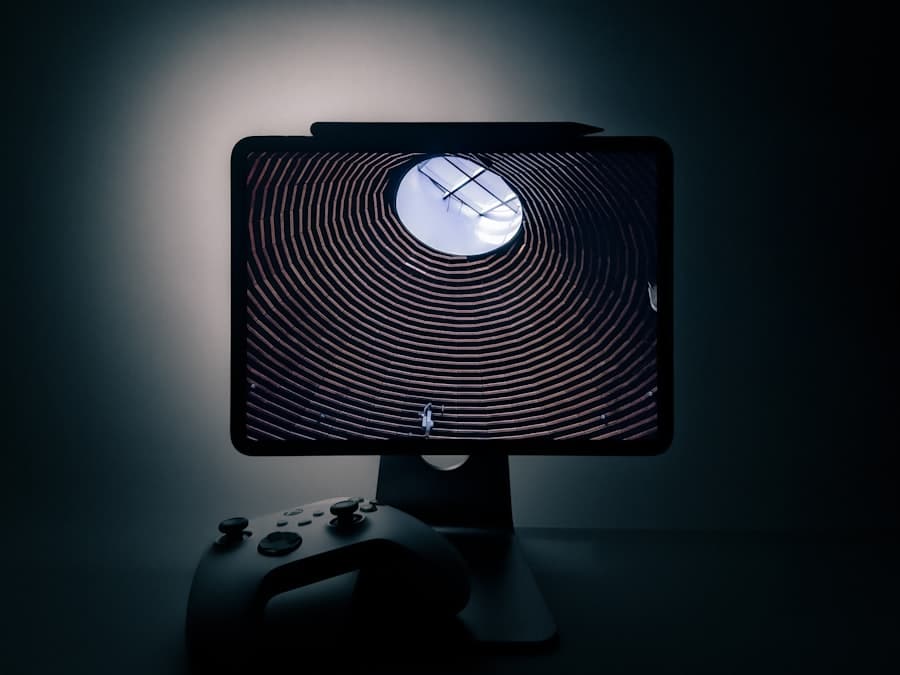The gaming landscape has undergone a seismic shift in recent years, with augmented reality (AR) emerging as a transformative force. Unlike traditional gaming, which often confines players to screens, AR-powered gaming integrates digital elements into the real world, creating immersive experiences that blend the virtual and physical realms.
The rise of AR gaming is not merely a trend; it represents a fundamental change in how games are designed, played, and experienced. As technology continues to advance, the potential for AR-powered gaming expands exponentially. Developers are increasingly leveraging sophisticated algorithms, machine learning, and computer vision to create more engaging and interactive experiences.
The ability to overlay digital content onto the real world opens up new avenues for storytelling and gameplay mechanics, allowing for a level of interactivity that was previously unimaginable. This evolution is not just about enhancing entertainment; it also has implications for social interaction, education, and even physical fitness, as players engage with their environment in novel ways.
Key Takeaways
- AR-powered gaming has seen a significant rise in popularity in recent years, revolutionizing the gaming industry.
- The evolution of AR gaming technology has led to more immersive and interactive gaming experiences for players.
- AR-powered gaming has expanded into both virtual and augmented reality, offering a wide range of possibilities for gamers.
- The impact of AR-powered gaming on the gaming industry has been substantial, leading to new opportunities and challenges.
- The integration of AR-powered gaming in other devices, such as holographic displays and wearable tech, is shaping the future of gaming experiences.
The Evolution of AR Gaming Technology
The journey of AR gaming technology can be traced back to the early 1990s when researchers began experimenting with computer-generated imagery overlaid on real-world environments. However, it wasn’t until the advent of smartphones equipped with powerful processors and advanced sensors that AR gaming began to gain traction. The introduction of Apple’s ARKit and Google’s ARCore provided developers with robust frameworks to create immersive experiences that could be accessed by millions of users worldwide.
These platforms enabled the seamless integration of digital objects into the physical world, allowing for more sophisticated gameplay mechanics and user interactions. One of the pivotal moments in the evolution of AR gaming was the release of Pokémon GO in 2016. This groundbreaking game utilized GPS technology to encourage players to explore their neighborhoods while capturing virtual creatures.
The game’s success demonstrated the potential of AR to foster community engagement and physical activity, as players flocked to parks and public spaces in search of Pokémon. Following this phenomenon, numerous developers began to explore the possibilities of AR gaming, leading to a surge in innovative titles that pushed the boundaries of what was possible. From location-based games to interactive storytelling experiences, the evolution of AR technology has paved the way for a diverse array of gaming experiences that cater to various interests and demographics.
AR-Powered Gaming in Virtual and Augmented Reality

While augmented reality enhances the real world with digital overlays, virtual reality (VR) immerses users in entirely fabricated environments. The intersection of these two technologies has given rise to hybrid experiences that leverage the strengths of both. For instance, games like Beat Saber combine VR’s immersive capabilities with AR elements, allowing players to interact with their surroundings while engaging in rhythm-based gameplay.
This blending of technologies creates a more dynamic experience, where players can feel as though they are part of the game world while still being aware of their physical environment. Moreover, AR-powered gaming is not limited to mobile devices; it is increasingly being integrated into dedicated gaming consoles and VR headsets. Companies like Microsoft have pioneered this integration with devices such as HoloLens, which allows users to interact with holographic images in their physical space.
This technology has applications beyond gaming, including training simulations and educational tools, but its potential for entertainment is particularly exciting. As developers continue to experiment with these hybrid experiences, we can expect to see more innovative gameplay mechanics that challenge traditional notions of what a game can be.
The Impact of AR-Powered Gaming on the Gaming Industry
The impact of AR-powered gaming on the industry is profound and multifaceted. First and foremost, it has opened up new revenue streams for developers and publishers. The success of mobile AR games has demonstrated that there is a significant market for location-based and interactive experiences, prompting companies to invest heavily in this space.
In addition to traditional sales models, many AR games utilize microtransactions and in-app purchases, allowing players to enhance their experience while generating ongoing revenue for developers. Furthermore, AR gaming has fostered a sense of community among players. Unlike traditional gaming experiences that often isolate individuals in front of screens, AR games encourage social interaction and collaboration.
Players frequently gather in public spaces to participate in events or challenges, creating a shared experience that transcends geographical boundaries. This communal aspect has led to the formation of dedicated fan bases and online communities where players can share tips, strategies, and experiences. As a result, AR-powered gaming is not just reshaping how games are played; it is also redefining the social dynamics within the gaming community.
The Integration of AR-Powered Gaming in Other Devices
The integration of AR-powered gaming extends beyond smartphones and dedicated gaming consoles; it is increasingly being incorporated into various devices that enhance user experience. Smart glasses represent one such innovation that holds promise for the future of AR gaming. Companies like Magic Leap and Google have developed lightweight eyewear that allows users to experience augmented reality without needing to hold a device.
Additionally, wearable technology such as smartwatches and fitness trackers is beginning to play a role in AR gaming. These devices can provide real-time feedback on player performance or health metrics during gameplay, creating a more personalized experience.
For example, an AR fitness game could track a player’s heart rate or calories burned while they engage in an interactive workout session. This integration not only enhances gameplay but also encourages healthier lifestyles by gamifying physical activity.
The Future of AR-Powered Gaming: Holographic Displays and Wearable Tech

Looking ahead, the future of AR-powered gaming is poised for remarkable advancements driven by innovations in holographic displays and wearable technology. Holographic displays have the potential to revolutionize how players interact with digital content by projecting three-dimensional images into their environment without the need for special glasses. This technology could create truly immersive experiences where players can manipulate holograms as if they were tangible objects in their surroundings.
Wearable tech is also set to play a crucial role in shaping the future of AR gaming. As devices become more sophisticated and integrated into our daily lives, we can expect to see advancements such as smart contact lenses that project augmented reality directly onto the user’s field of vision. This would eliminate the need for handheld devices or bulky headsets, allowing for seamless interactions with digital content while maintaining full mobility.
Such innovations could lead to entirely new genres of games that leverage these capabilities, further blurring the lines between reality and virtuality.
Challenges and Opportunities in the Future of AR-Powered Gaming
Despite its promising future, AR-powered gaming faces several challenges that must be addressed for widespread adoption. One significant hurdle is the need for robust infrastructure to support location-based experiences. Many AR games rely on GPS accuracy and real-time data processing, which can be hindered by urban environments or poor connectivity.
Developers must find ways to optimize their games for various settings while ensuring a consistent user experience. Moreover, privacy concerns surrounding data collection pose another challenge for AR gaming. Many applications require access to location data and personal information to function effectively.
As players become more aware of privacy issues, developers will need to implement transparent data practices and prioritize user consent to build trust within their communities. However, these challenges also present opportunities for innovation; developers who can navigate these complexities may find themselves at the forefront of a rapidly evolving industry.
The Potential of AR-Powered Gaming Beyond Smartphones
The potential of AR-powered gaming extends far beyond smartphones; it represents a paradigm shift in how we interact with digital content and our environment. As technology continues to evolve, we can expect new forms of engagement that challenge traditional notions of gameplay and storytelling. From holographic displays that create immersive experiences to wearable tech that enhances interactivity, the future holds exciting possibilities for both developers and players alike.
As we stand on the brink of this new era in gaming, it is essential for stakeholders across the industry—developers, hardware manufacturers, and consumers—to collaborate in shaping a future where AR-powered gaming thrives. By embracing innovation while addressing challenges such as privacy concerns and infrastructure limitations, we can unlock the full potential of augmented reality as a transformative force in entertainment and beyond.
In exploring the future of AR-powered gaming beyond smartphones, it’s essential to consider the broader ecosystem of smart devices that can enhance the gaming experience. One such device is the smartwatch, which is increasingly becoming a pivotal accessory in the tech world. For those interested in how smartwatches can complement AR gaming, the article on The Best Smartwatch Apps of 2023 provides valuable insights into the latest applications that could potentially integrate with AR technologies. This integration could lead to more immersive and interactive gaming experiences, as smartwatches offer unique functionalities that can be leveraged in AR environments.
FAQs
What is AR-powered gaming?
AR-powered gaming, or augmented reality gaming, is a type of video game that combines the real world with computer-generated elements. Players can interact with virtual objects and characters in their real environment using a device such as a smartphone, tablet, or AR headset.
How is AR-powered gaming different from traditional gaming?
Traditional gaming typically involves playing video games on a screen, while AR-powered gaming integrates virtual elements into the player’s real-world environment. This allows for a more immersive and interactive gaming experience.
What are some examples of AR-powered gaming beyond smartphones?
Some examples of AR-powered gaming beyond smartphones include AR headsets such as Microsoft HoloLens and Magic Leap, as well as AR glasses like Nreal Light. These devices offer a more immersive AR gaming experience by overlaying virtual elements onto the user’s field of view.
What are the potential future developments in AR-powered gaming?
The future of AR-powered gaming may involve advancements in AR technology, such as improved hardware and software capabilities. This could lead to more realistic and immersive AR experiences, as well as new gaming applications in areas such as education, healthcare, and entertainment.
How is AR-powered gaming expected to evolve in the coming years?
In the coming years, AR-powered gaming is expected to become more mainstream as AR technology continues to advance and become more accessible. This could lead to a wider variety of AR games and applications, as well as new opportunities for developers and players alike.

